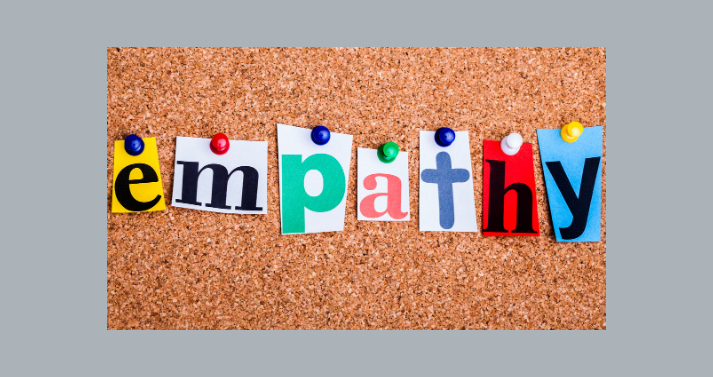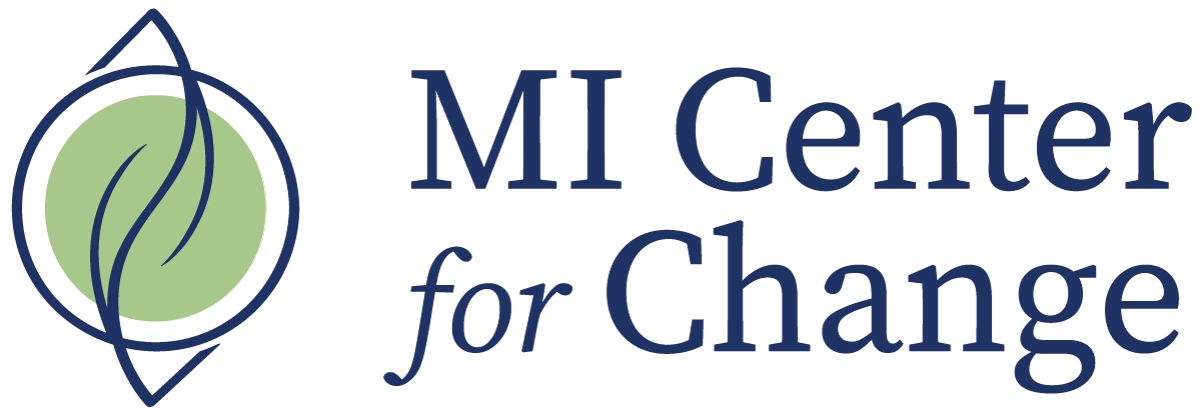My daughter pierced her own belly button. Using Motivational Interviewing to engage in meaningful conversation.

So… My oldest daughter got on a group chat with a couple other kids one evening recently, and they pierced their belly buttons together.
She timidly and excitedly showed me her piercing later that night, seeking my approval. (I’d wondered why she rushed through the kitchen to get some ice earlier!).
She still had a safety pin in her belly button, the skin around it red and angry.
On the inside, I was thinking, EWWW! WTF, she isn’t even a teenager yet, how did we get here? What did I do wrong? What was she thinking? She’s not going to have her phone for a month! These peers are not a good influence! Lots of judgment!
On the outside, I practiced my poker face, the same one I use with clients who say or do things that I may find shocking or hard to hear.
Then I reflected to her, “You seem jittery and excited. Tell me more about what led you to this?”
She shared more, I listened, and I reflected.
You can bet I had my own loud internal dialogue going on.
She shared that she sterilized the needle with alcohol before she pierced, as well as sterilizing her skin (although she never mentioned washing her hands– that’s an ongoing battle!).
Then, I asked her (open-ended questions), “What do you know about piercing, hypoallergenic metals, and infection?”
She didn’t know a thing about any of that, so we headed to Google together.
Together we googled what type of metal a safety pin has (definitely NOT hypoallergenic), and she learned stainless steel and gold are the best metals for a new piercing. She located a gold earring post in her bathroom, previously used for her earring piercing, and slid it into her belly button to replace the brass or nickel of the safety pin.
Next, we looked at pictures of infected belly buttons, and I provided her some education about what to look for if it becomes infected. Her eyes got a bit bigger here, but she also grew defensive, “That’s not going to happen to me mom!” (I held back my Righting Reflex).
She was expecting me to disapprove and was ready to argue with my logic and push back with her own.
I honored her autonomy, and said, “It is your body, and I want you to practice making healthy choices about your body. Let’s look at this choice together.”
I kept sidestepping the wrestling that was invited in a situation such as this. I know she is flexing her autonomy and exploring. I also knew that if I had a big reaction, then my reaction would become the focus of our interaction, rather than keeping it about her choice. This is a learning opportunity for her. I didn’t want to make it about pushing against me, my values, and my reaction.
After more listening and reflection and learning, she asked me what I thought. Did I approve, was it OK what she did?
This was my window to share a little bit of my opinion (but BOY was it hard to not launch into a lecture here and tell her everything I was thinking!!).
So I shared with her that I would like for her to consider, when choosing to do something, to take a pause and consider how to do it right. What information might she want to know before making a choice like this? How does she want to make decisions like this? (Because all her friends do it?? If all your friends jumped off a cliff would you do it too? Oh but I didn’t go there either…) And, I expressed my concern about infection and hope she will keep an eye on that.
I did not tell her it was ok or that I approved, because I didn’t. (Motivational Interviewing is not about agreeing or endorsing other people’s choices).
I did create the space to listen to her, honor her autonomy, express my concerns, and create a collaborative plan (She agreed to watch for infection and help her learn about how piercings are done right.)
Although many say that you should not use Motivational Interviewing with family members because we have such a vested interest in the outcome, I find that so many tools of MI can be utilized in all relationships.
In this scenario, I strived to embody the spirit of curiosity and partnership, demonstrate empathy from reflective listening, ask open-ended questions, and Elicit-Provide-Elicit acronym. I elicited her thoughts and knowledge about the topic, I provided my thoughts, and elicited again to create a plan that she could own.
(Then I went and had a conniption fit in my bedroom because I’m human, I was shocked and I was upset!)
P.S. Two days later, she noticed signs of infection and took it out herself, coming to me for help with topical treatments. I can’t help but think that if I’d dug in about this terrible decision she made, she would have dug in herself about refusing to take it out, or NOT come to me with infection issues.
Motivational Interviewing Tip of The Week: When someone you care about, client, friend, or family member, takes action that you don’t agree with, consider what tools from Motivational Interviewing can be utilized. Is it curiosity? Reflective listening? Open-ended questions? Is it honoring their autonomy out loud? Is it practicing an information exchange through Elicit-Provide-Elicit? Remember, we want our clients (or family members) to own the problem, keep this about them, and stay in a relationship that fosters collaboration, power sharing, and empathy.
Related Posts
No Results Found
The page you requested could not be found. Try refining your search, or use the navigation above to locate the post.
Related Posts

Do you have more or less empathy when you have ‘been there too’?
One day when I was driving to work, I heard a snippet from the podcast Hidden Brain on NPR. The research question addressed was, “Do we have more or less empathy when we have had the same or similar experience as another?” The answer surprised me. We tend to have...

Let’s Learn Together!
Hi, I’m Hillary Bolter. At MI Center for Change, Motivational Interviewing is our passion. Motivational Interviewing will help you become more effective and efficient as you support clients’ change!

